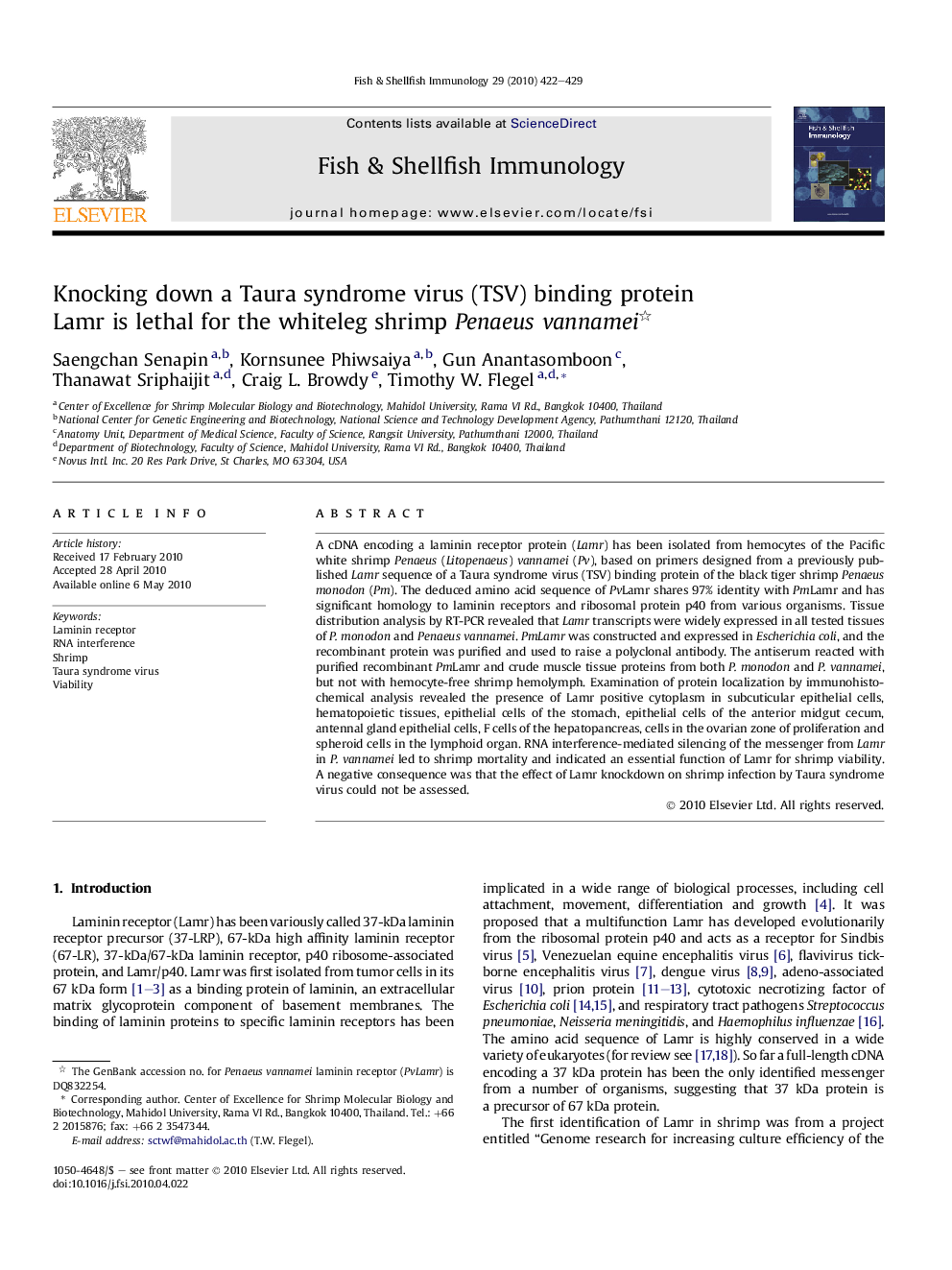| Article ID | Journal | Published Year | Pages | File Type |
|---|---|---|---|---|
| 2432550 | Fish & Shellfish Immunology | 2010 | 8 Pages |
A cDNA encoding a laminin receptor protein (Lamr) has been isolated from hemocytes of the Pacific white shrimp Penaeus (Litopenaeus) vannamei (Pv), based on primers designed from a previously published Lamr sequence of a Taura syndrome virus (TSV) binding protein of the black tiger shrimp Penaeus monodon (Pm). The deduced amino acid sequence of PvLamr shares 97% identity with PmLamr and has significant homology to laminin receptors and ribosomal protein p40 from various organisms. Tissue distribution analysis by RT-PCR revealed that Lamr transcripts were widely expressed in all tested tissues of P. monodon and Penaeus vannamei. PmLamr was constructed and expressed in Escherichia coli, and the recombinant protein was purified and used to raise a polyclonal antibody. The antiserum reacted with purified recombinant PmLamr and crude muscle tissue proteins from both P. monodon and P. vannamei, but not with hemocyte-free shrimp hemolymph. Examination of protein localization by immunohistochemical analysis revealed the presence of Lamr positive cytoplasm in subcuticular epithelial cells, hematopoietic tissues, epithelial cells of the stomach, epithelial cells of the anterior midgut cecum, antennal gland epithelial cells, F cells of the hepatopancreas, cells in the ovarian zone of proliferation and spheroid cells in the lymphoid organ. RNA interference-mediated silencing of the messenger from Lamr in P. vannamei led to shrimp mortality and indicated an essential function of Lamr for shrimp viability. A negative consequence was that the effect of Lamr knockdown on shrimp infection by Taura syndrome virus could not be assessed.
